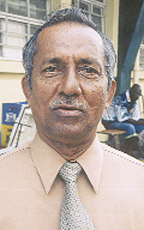The government’s decision to land a new fibre optic cable exclusively dedicated to e-governance has sparked concern about its cost when weighed against its potential benefits to the country.

In early January, President Bharrat Jagdeo announced the plans for the overland cable from Brazil, while noting that that the government is working to enhance the Informa-tion and Communication Technology (ICT) sector. In December, the government had already advanced full payment of $353,548,617 (US$1.7M) to an American company for provision for the installation of fibre optic cables and terminal equipment. Jagdeo explained that the cable would be “dedicated purely to e-governance” and he anticipated the linking of institutions like schools, hospitals and police stations using the facility as well as greater telecoms reliability by ensuring redundancy. Currently, the capacity of the Americas II cable has almost been fully exploited, while damage to it has been responsible for major disruptions in telecoms traffic here.
The landing of the overland cable is scheduled for the second quarter.
However, the announcement coincided with the shore-end landing of the Suriname–Guyana Submarine Cable System (SG-SCS), which represents a US$30 million investment for local telecoms giant GT&T. According to GT&T, the SG-SCS would make available at least 3,000 times the current bandwidth capacity in use locally, in addition to ensuring reliable voice and data telecom services.
While President Jagdeo expressed an interest in working with GT&T to swap capacity on the cables, saying there is no intention to infringe on the company’s ability to earn, PNCR-1G MP Winston Murray questions whether the country can afford to pursue the new venture at this time. Murray voiced concerns when government sought retroactive approval for the advance payment in a supplementary budget presented to the National Assembly.
Murray told Stabroek News that in the light of the enormous capacity of the SG-SCS, to invest hundreds of millions in a redundancy system is objectionable. “It represents warped priorities for the utilisation of public resources,” he lamented, adding that there were many areas where the money could be better utilised to the benefit of citizens. “To say that we could afford the luxury of having an exclusive system–a back up system–while all of this is going on and there is enough capacity in the system that can accommodate them, to me represents a warped sense of priorities,” he said.
He also believes that the cable was responsible for the government’s decision to sell its 20% share in GT&T. “It was political and not economic,” he said, “Since it was clear that the investment in the 20% share holding was very lucrative.” He thinks that it was unlikely that the government would have been able to find a willing lender through multilateral institutions to finance its cable, since it would be seen to be in direct competition with a private sector initiative. At the time, Prime Minister Samuel Hinds explained that the government’s decision to put up its shares for sale was in keeping with its goal to liberalise the telecommunications sector. “We want to do something that will bring benefit not only to those who are accidentally employees of GT&T but we want to bring benefits to every Guyanese and that is why we are looking to sell these shares so that we can have enough money… take that amount of money and finance out of our own the provision of a computer to maybe 80 per cent of the households all across Guyana,” Hinds said during a parliamentary debate on an opposition motion that sought the suspension of the sale. The motion, tabled by Opposition Leader Robert Corbin, contended that the 20% ownership in GT&T did not in any way inhibit or prevent the government from permitting other telecommunications and internet operations from doing business in Guyana and should not affect the implementation of a government policy liberalising the telecommunication sector.
Murray also suspects that under scrutiny, it would be revealed that the GT&T cable offered more than enough capacity to meet the government’s needs. Indeed, GT&T has been touting its cable as a major avenue for e-governance services, which company CEO Major General (ret’d) Joe Singh has said could improve the quality of government services through the creation of a nationwide system to deliver government services electronically, like pensions, passports and birth certificates. Singh has also emphasised the development of an integrated electronic access to government information and services, the establishment of national law enforcement, public safety and civil defence networks as potential ways to improve the quality of government services.
According to Murray, the government has also argued that the dedicated cable would also ensure a level of security. “In other words, they distrust the private sector,” he says, “although they have used it all this time without any problem.” He added that while the government seeks security for itself, it passed a law that would enable wiretaps of private citizens. “So, they want to apply two standards,” he said.
Meanwhile, when asked recently to account for the wide gap between the cost of the SG-SCS and the overland cable, Cabinet Secretary Dr Roger Luncheon said the different logistics of the two projects were responsible for the differential. He also said that costs were significantly lower as a result of the public-private investment. “If the financing assumed aspects of public-private mix, financial investments would be less than if it were exclusively one or the other,” he said.









